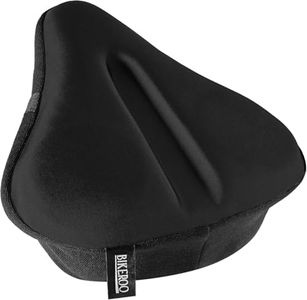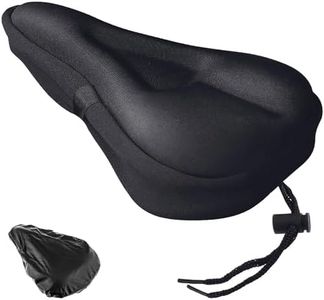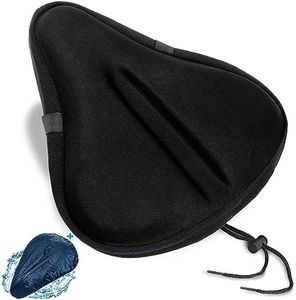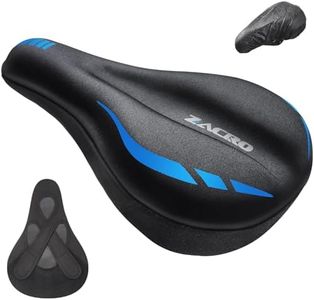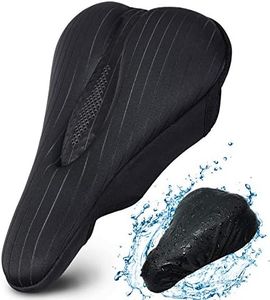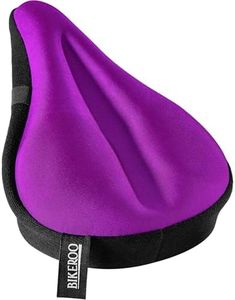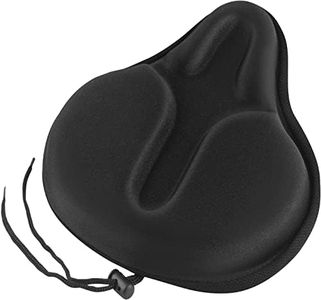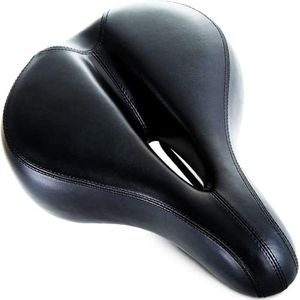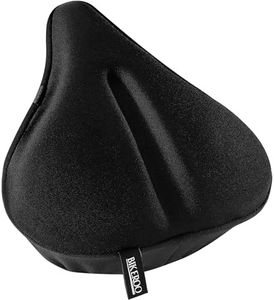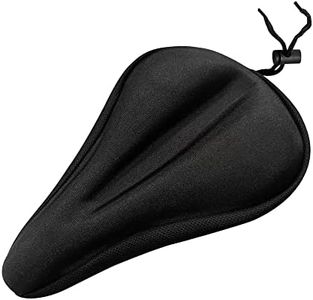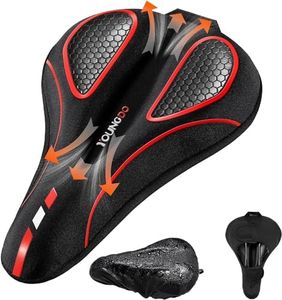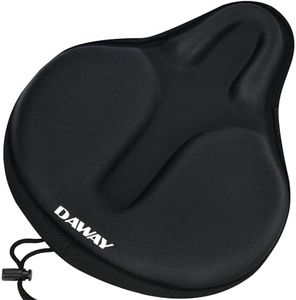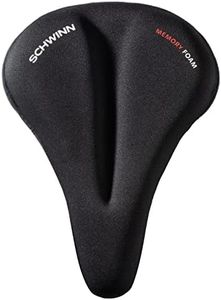We Use CookiesWe use cookies to enhance the security, performance,
functionality and for analytical and promotional activities. By continuing to browse this site you
are agreeing to our privacy policy
10 Best Bike Seat Covers
From leading brands and best sellers available on the web.Recommended lists
Buying Guide for the Best Bike Seat Covers
Choosing the right bike seat cover can make a big difference in your cycling comfort and enjoyment. The main goal is to find a cover that fits your bike seat well, provides the right amount of cushioning, and suits your riding style. Before buying, think about how often you ride, the type of bike you have, and any discomfort you currently experience. A good seat cover can help reduce soreness, improve grip, and even protect your original seat from wear and tear.MaterialThe material of a bike seat cover affects comfort, durability, and how well it handles weather. Common materials include gel, foam, and synthetic fabrics. Gel covers are soft and mold to your body, making them great for comfort on longer rides. Foam covers offer firmer support and are often lighter, which can be better for short, intense rides. Synthetic fabrics, like lycra or neoprene, are durable and handle moisture well, making them good for wet conditions. To pick the right material, consider how much comfort you need, how long your rides are, and whether you ride in wet or dry conditions.
Padding ThicknessPadding thickness determines how much cushioning you get from the seat cover. Thicker padding can help reduce pressure and soreness, especially on long rides or rough terrain. However, too much padding can feel bulky and may not suit riders who prefer a closer connection to the bike. Thin padding is lighter and gives a firmer feel, which some riders prefer for short trips or racing. Think about your typical ride length and whether you often feel discomfort—if you do, a thicker cover might help, but if you want more control and less bulk, go thinner.
Size and FitBike seat covers come in different sizes to fit various seat shapes, such as narrow racing saddles or wide cruiser seats. A cover that is too small will not fit properly and may slip, while one that is too large can bunch up and cause discomfort. To choose the right size, measure your bike seat and compare it to the cover’s dimensions. Make sure the cover is designed for your type of bike—road, mountain, or cruiser—and always check for adjustable straps or drawstrings that help secure the cover in place.
Grip and Anti-Slip FeaturesGrip and anti-slip features help keep the seat cover in place while you ride. Some covers have textured undersides or silicone dots to prevent sliding, which is especially important if you move around a lot on your seat or ride on bumpy roads. If you find your current seat cover shifts during rides, look for these features. For casual riders on smooth paths, this may be less important, but for more active or off-road cyclists, a secure fit is key to comfort and safety.
Water ResistanceWater resistance is important if you ride in wet weather or leave your bike outside. A water-resistant cover will keep your seat dry and prevent it from absorbing moisture, which can lead to discomfort and damage over time. Some covers are fully waterproof, while others just resist light rain. If you often ride in the rain or park your bike outdoors, look for a cover with good water resistance. If you mostly ride indoors or in dry weather, this feature may be less critical.
